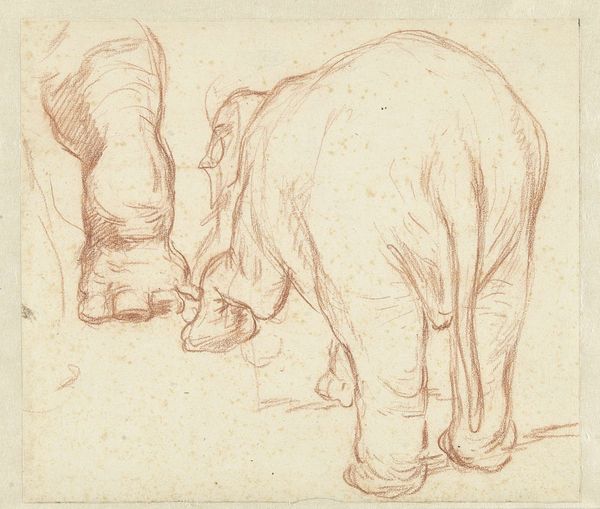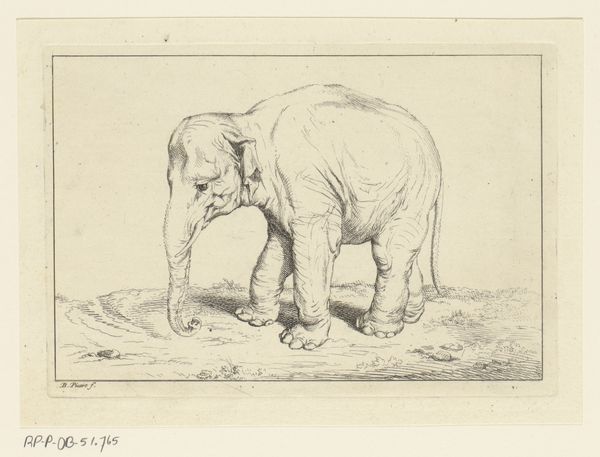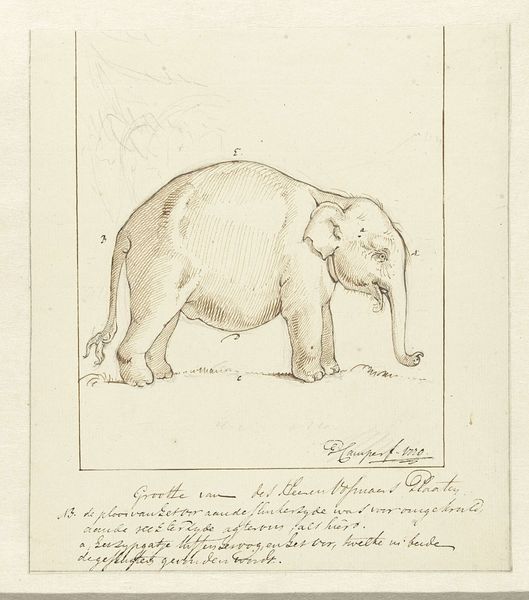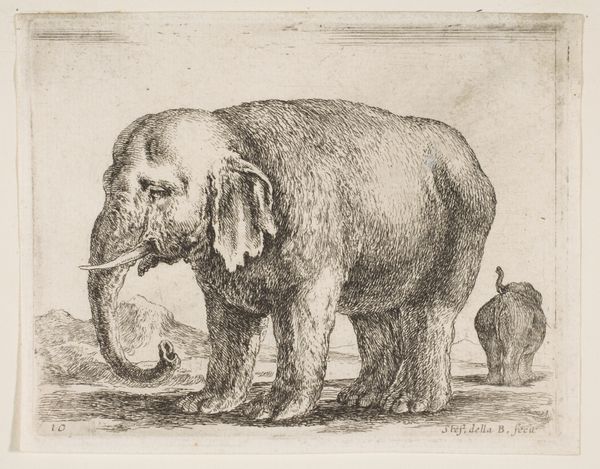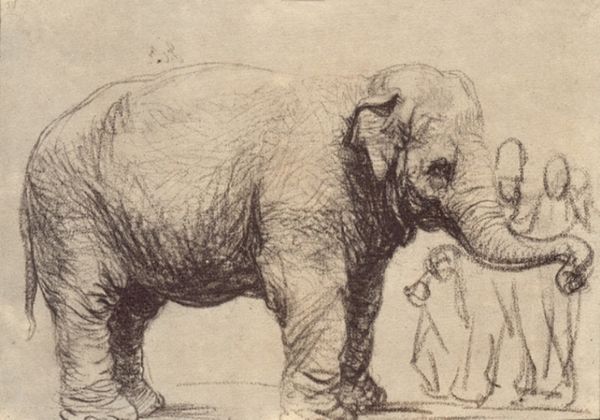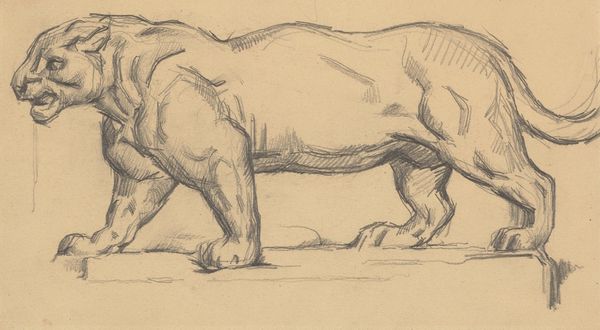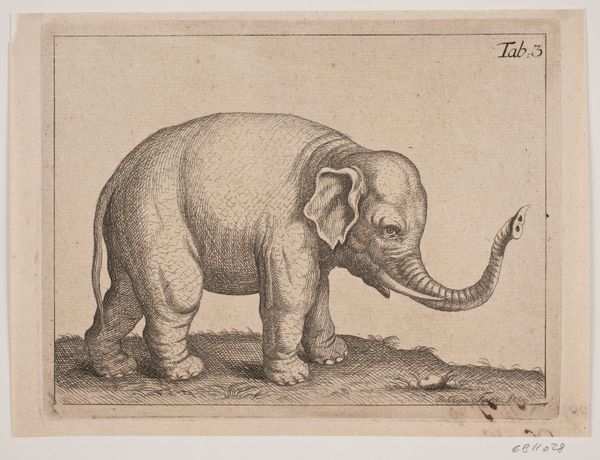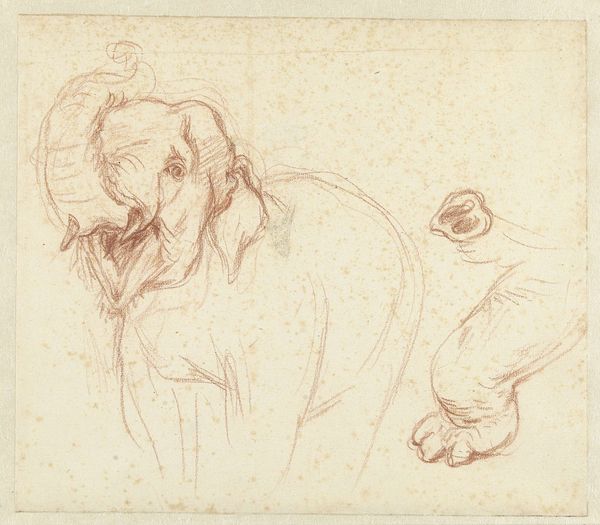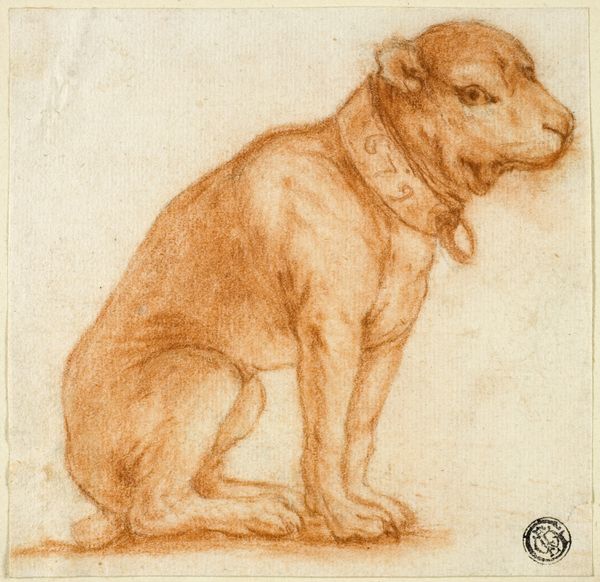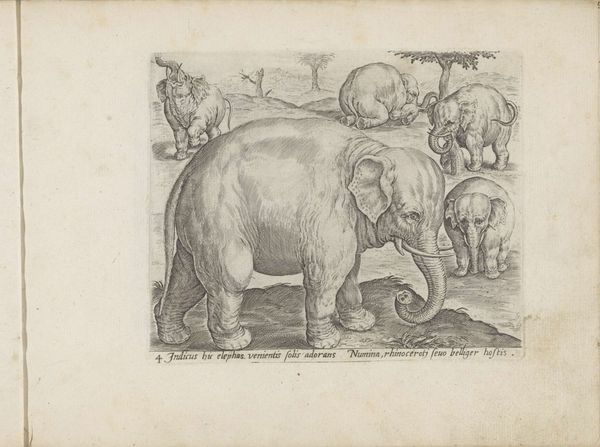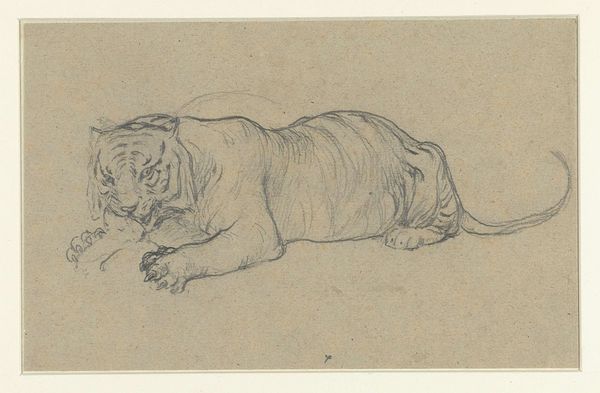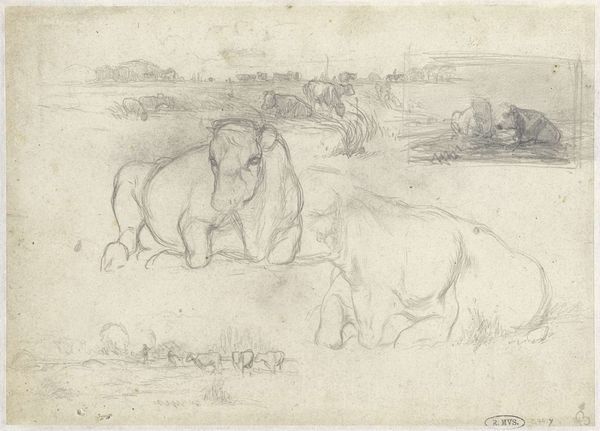
drawing, pencil
#
portrait
#
pencil drawn
#
drawing
#
imaginative character sketch
#
toned paper
#
light pencil work
#
animal
#
pencil sketch
#
figuration
#
personal sketchbook
#
pencil
#
line
#
sketchbook drawing
#
portrait drawing
#
pencil work
#
sketchbook art
#
realism
Dimensions: height 232 mm, width 176 mm
Copyright: Rijks Museum: Open Domain
Petrus Camper sketched this ‘Lopende olifant’ or ‘Walking Elephant’ with pen in brown ink on paper in the late 1700s. Camper wasn’t interested in high finish; instead, he was an anatomist, and drawing was essential to his way of thinking. This sketch represents a phase of encounter and discovery. Note how the artist has captured the elephant's movement with a sparse economy of line, a quick capturing of form that suggests immediacy. We know that during this period, exotic animals were brought to Europe and put on display for entertainment and educational purposes, reflecting a growing global trade and colonial expansion. This drawing, in its directness and lack of embellishment, serves as a reminder that even seemingly simple sketches carry layers of meaning. Appreciating the processes and materials used, helps us understand the cultural context and the artist’s intent. It allows us to challenge traditional hierarchies within art, recognizing the value and significance of works on paper.
Comments
No comments
Be the first to comment and join the conversation on the ultimate creative platform.

